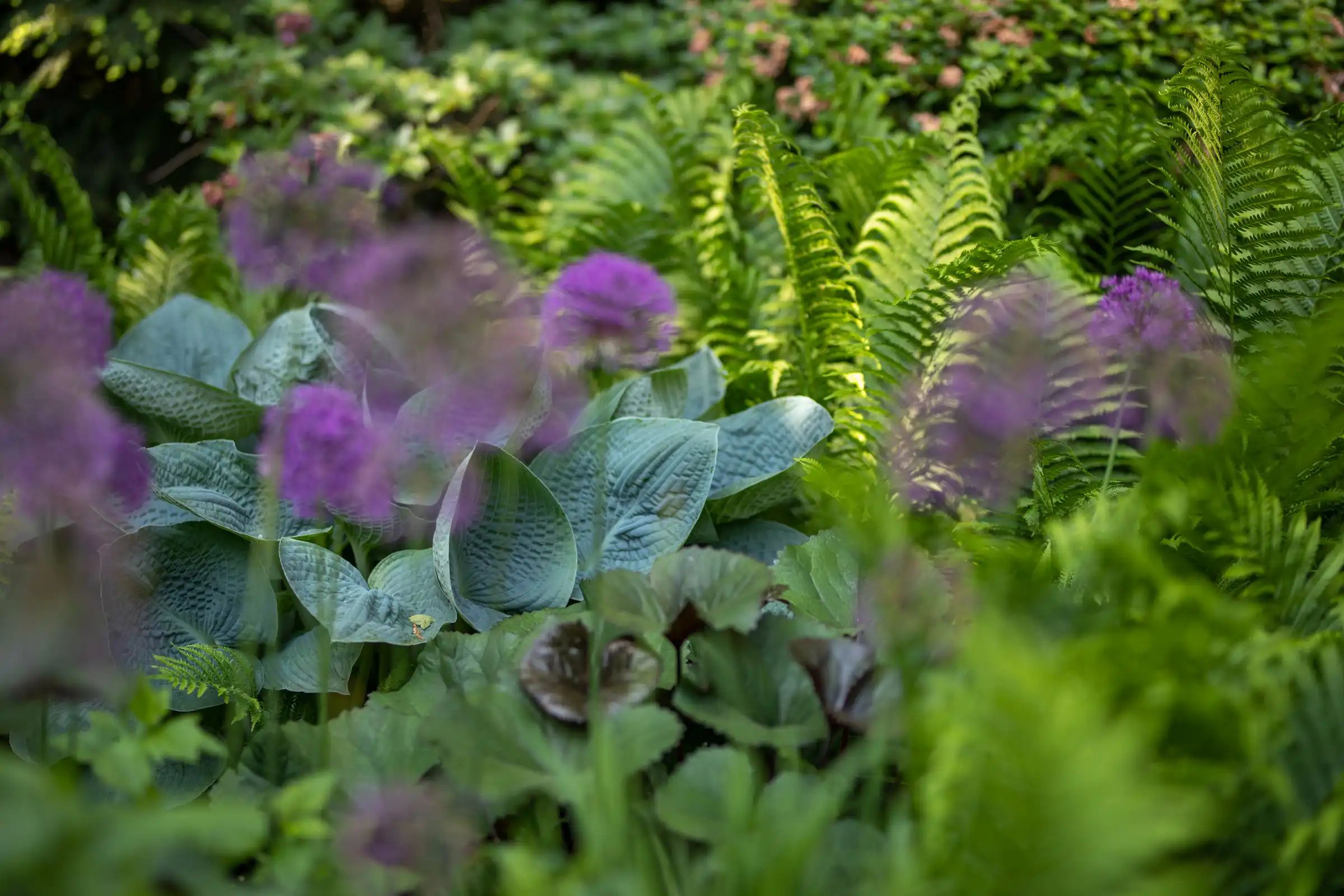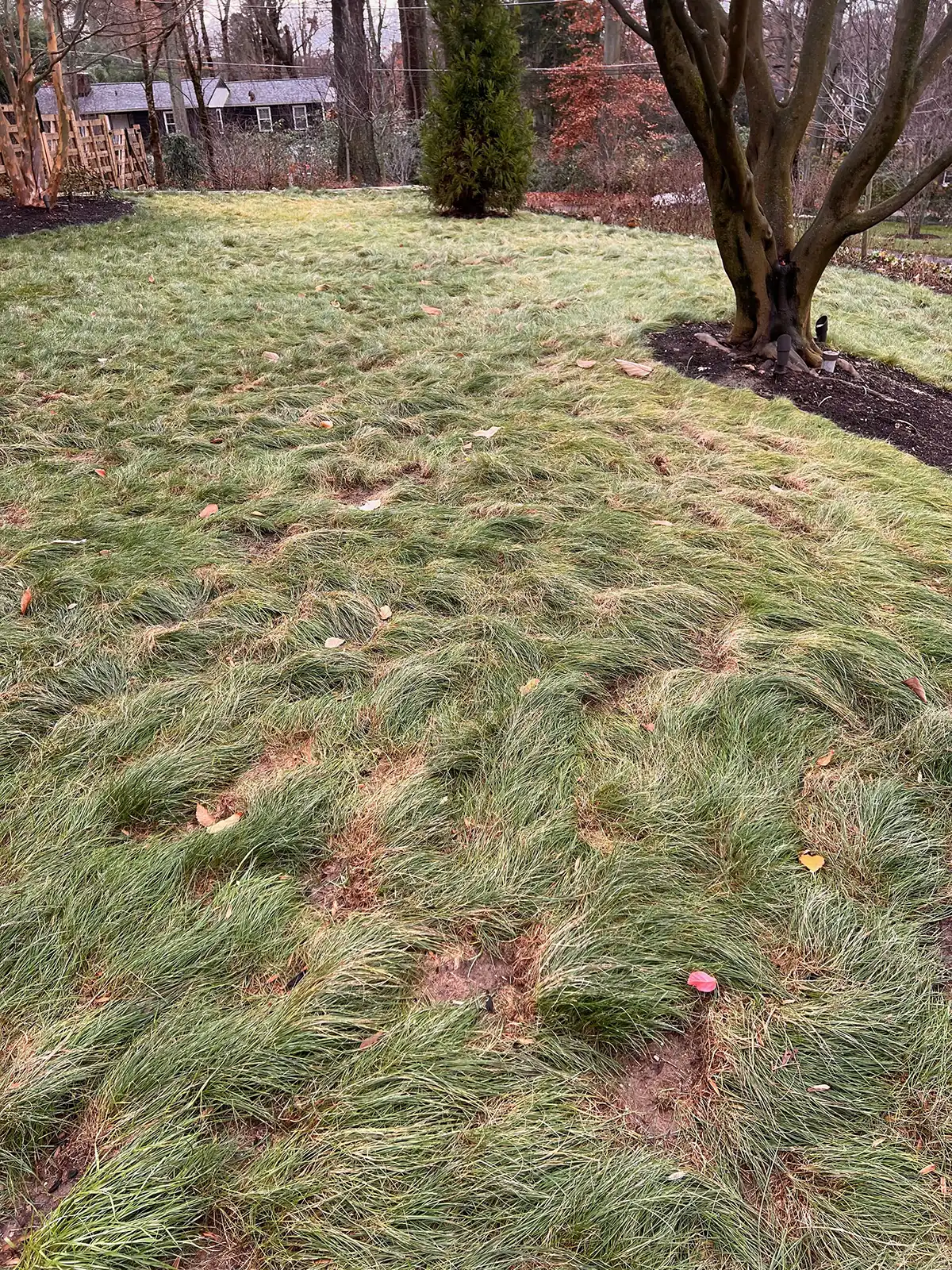
Damaged Lawn Square
Abiotic or Biotic Stressor?

Erratically Patterned Lawn Damage
Abiotic or Biotic Stressor?
One essential skill every successful turf manager must have is the ability to quickly and correctly diagnose problems others might scratch their heads at. In a way, solving turf issues can be more like detective work, as technicians must utilize years of field experience and up-to-date scientific knowledge to figure out what’s truly creating an issue. In some cases, the culprit is a simple overgrowth of weeds or lack of quality precipitation. But occasionally the problem is far more complex—requiring a full understanding of how outside factors influence the health of a lawn.
While there’s not enough room in a blog post—or time in the day!—to get too deep into the science behind it all, we can clarify the first diagnostic step to take, which will do wonders in helping you to understand what’s really affecting the health of your turf.
There are two types of plant stressors: biotic and abiotic. Biotic stressors are biological. They include living organisms like disease pathogens, insects or heavy weed populations, and are often the cause of erratically unhealthy lawns. Because they are generally easy to treat (herbicides for weeds, fungicides for fungi, etc), inexperienced turf managers or homeowners often jump to conclusions and misdiagnose problems as biotic when they’re really not. And it’s understandable! After all, if you went to the doctor feeling unwell, you’d rather take a pill and be on your way than go in for more tests. But reality is more complex.
Other types of plant stressors are abiotic. You could think of these as non-biological, or non-living. Examples include wind, temperature, moisture, lawn-mower tires, spilled gasoline, or too many neighborhood kids playing football in your yard every weekend. These various factors can be lumped into different categories, such as chemical (herbicide drift for example), mechanical (those tires!), or weather-based (a dry August). What links all these together, aside from being abiotic, is their ability to fly under the radar during diagnostics.
This tendency to overlook abiotic stressors in diagnoses is understandable, but amateur. Seasoned turf detectives know that issues like drought stress, excess heat, and mechanical pressure are more often than not the cause of injury. But these abiotic factors are difficult to control and often point to improper cultural practices that could portray a landscaper negatively. As a landscaping company ourselves, we make sure to maintain high standards of excellence, so that our actions never negatively affect our customers’ properties. Unfortunately, not every company has the same dedication to quality.
There are a few simple rules-of-thumb that can help you understand for yourself the decisions your turf manager makes, which will help increase your confidence in the work they do. First, is that biotic factors are easily identifiable by their tendency to get progressively worse over time. As they’re created by living organisms, they also tend to display more random patterns. Abiotic stressors, on the other hand, have uniform patterns of injury, such as a square where a car was parked or a side of the lawn that didn’t get enough sun. And because they’re usually man-made, they’re generally non-progressive issues resulting from one-time damage.
Keeping this information in mind will help you to better understand the issues you face with your lawn. But the complicated process of diagnosis is clearly better left to the professionals in the end. Hopefully after reading through this article, you better understand why!
If you’re in our area, give Terren Landscapes a call to discuss what’s going on with your lawn and learn how our turf care department might be able to assist you in figuring it out!
Reference:
Buckley, Richard. (2014) Lecture on The art of the diagnosis: simple steps to aid in plant problem solving. Personal Collection of R. Buckley, Rutgers University, New Brunswick, NJ




